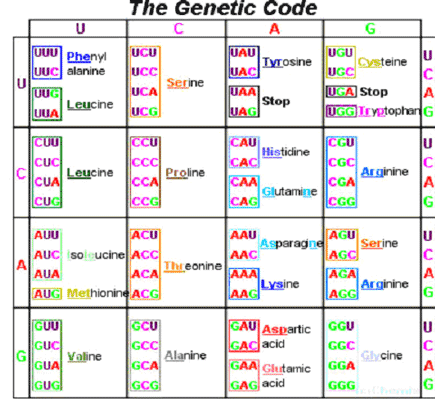 |
|
|
Open Reading Frames (ORF)
Gene finding in prokaryotes
is restricted to search for open reading frames (ORF). An ORF(link)
is a sequence of DNA that starts with start codon “ATG”
(not always) and ends with any of the three termination codons (TAA, TAG, TGA).
Depending on the starting point, there are six (Fig. 1) possible ways
(three on forward strand and three on complementary strand) of translating any nucleotide
sequence into amino acid sequence according to the genetic code (Table 2 ) .These are called reading frames

Figure 1: An open reading frame starts with AUG and continues in triplets to a termination codon. Blocked reading frames may be interrupted frequently by termination codons. (Source: GENES VIII, Lewin)
While eukaryotic gene finding is altogether a different task as the eukaryotic genes are not continuous and interrupted by intervening noncoding sequences called ‘introns’.
Moreover organization of genetic information in eukaryotes and prokaryotes is different (Table 1).
Table 1: Genome size of some organisms
Table 1: Comparison of Organization of Genetic Information in Eukaryotes & Prokaryotes |
|
Prokaryotes |
Eukaryotes |
Number of Chromosomes |
One |
many |
Shape of Chromosomes |
circular |
linear |
Histones in chromosomes? |
No |
yes |
Chromosomes attached to
something |
Yes |
no |
Size of chromosomes |
3 million base
pairs
forE. coli |
2-5 X 10 7 base pairs/ av.
chromosome |
Separate compartment
(nucleus) for
chromosomes? |
No |
yes |

Table 2: The Genetic code (Source:library.thinkquest.org/.../ genetic%20code.jpg)
|
|
|

